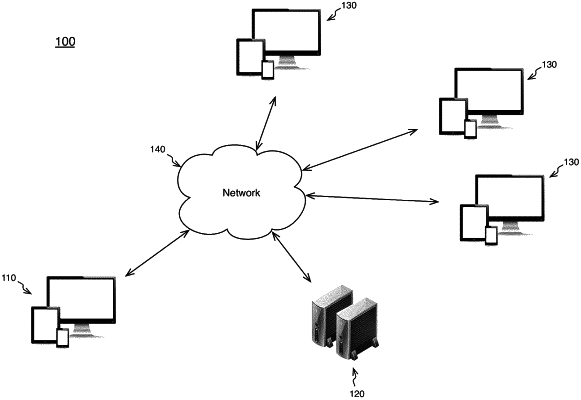| CPC G09B 7/02 (2013.01) [G09B 5/10 (2013.01)] | 18 Claims |

|
1. A method, comprising:
storing a parameter structure pertaining to a grouping of a plurality of users sampled over a shared communications network and associated and/or co-located with a plurality of user computing devices, the parameter structure generated, at least in part, via a processor of a first computing device, wherein the plurality of user computing devices comprises at least a first grouping of user computing devices of a first network location and a second grouping of user computing devices of a second network location; and
responsive at least in part to an upload via the shared communications network of first digital content of a first signal type to the first computing device, wherein the first digital content comprises digital content representative of one or more instructions systematized for the grouping of the plurality of users:
converting, at least in part via the processor of the first computing device, the first digital content of the first signal type into second digital content of a second signal type;
autonomously transmitting, via the shared communications network, the first digital content to one of the first or the second groupings of user computing devices, wherein the one of the first or the second groupings of user computing devices is selected by the processor of the first computing device based, at least in part on, a machine-learning processing of the second digital content of the second signal type;
providing remote access to the selected one of the first or the second groupings of user computing devices over the shared communications network so that users of the one of the first or the second groupings of user computing devices can provide at least one freeform response through a graphical user interface of respective user computing devices, the at least one freeform response to be provided responsive to a computer query autonomously generated, at least in part via the processor of the first computing device, to facilitate a pattern matching based, at least in part, on one or more thresholds determined for the sampled grouping and based, at least in part, on the machine-learning processing of the second digital content of the second signal type;
autonomously transmitting, via the communications network, the autonomously generated computer query to the selected one of the first or the second groupings of user computing devices;
obtaining signals and/or states representative of at least one freeform response to the autonomously generated computer query from a supervisor computing device;
receiving, at the first computing device, one or more signals and/or states representative of one or more user-generated freeform responses to the autonomously generated computer query from one or more user computing devices of the selected one of the first or the second groupings of user computing devices; and
applying, at least in part via one or more artificial intelligence operations performed by the processor of the first computing device, the one or more user-generated freeform responses obtained from the one or more user computing devices of the selected one of the first or second groupings of user computing devices to the at least one freeform response obtained from the supervisor computing device and/or to the one or more determined thresholds for determining the pattern matching to determine one or more performance metrics indicative of a particular degree of understanding and/or retention of the one or more instructions of the first digital content.
|